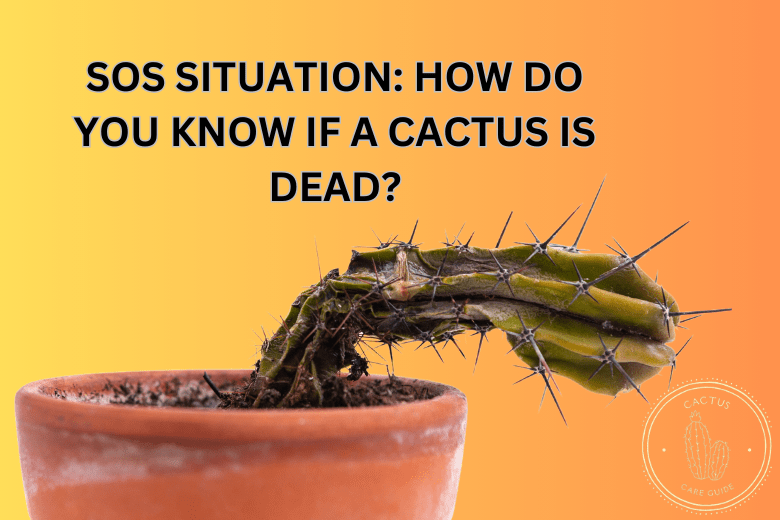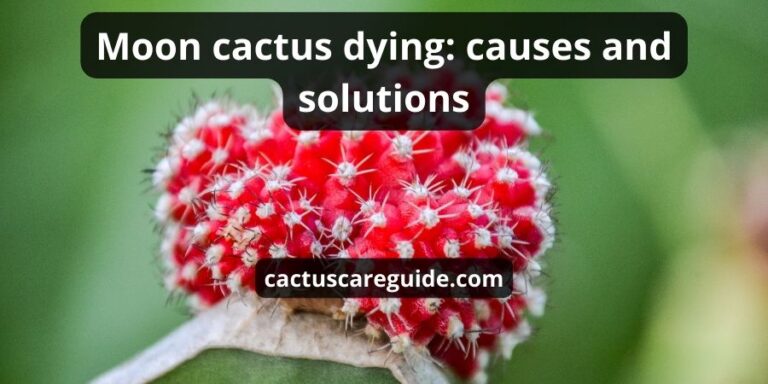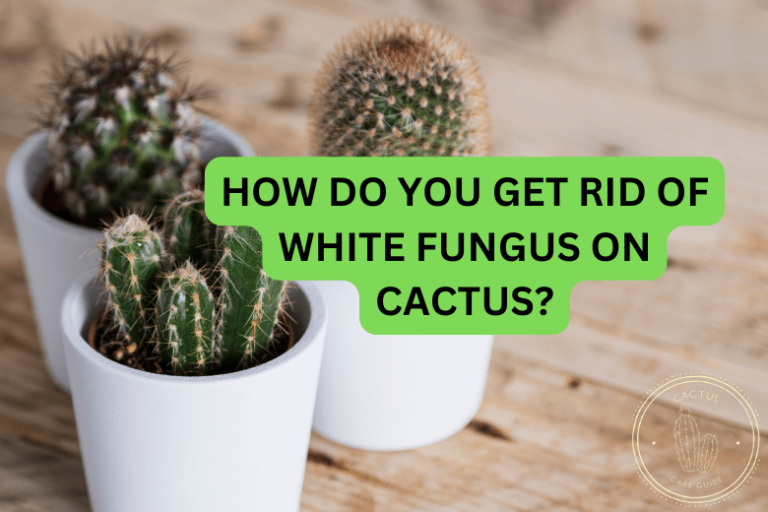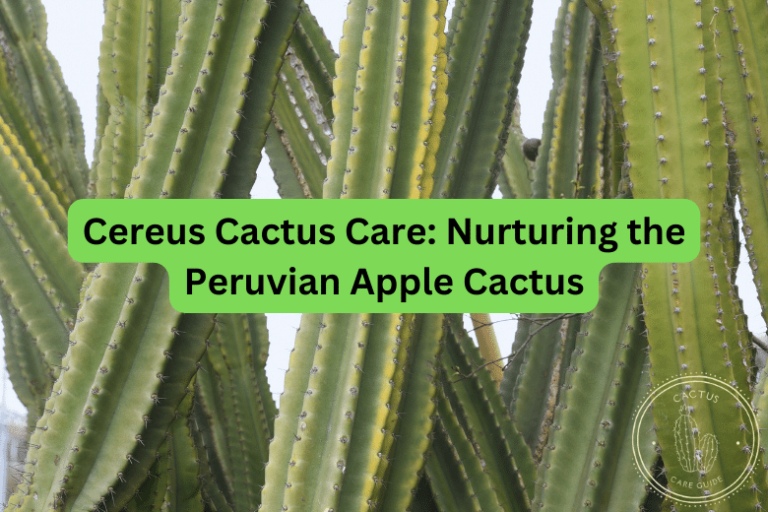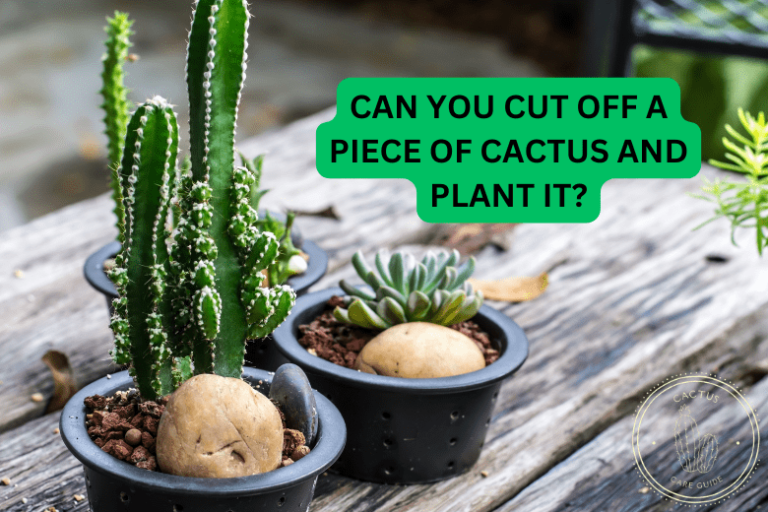SOS Situation: How Do You Know If a Cactus is Dead?
For many novice gardeners, cacti plants are the go-to choice.
They are known for surviving in hard conditions with minimal care.
If these requirements aren’t met, you might be left wondering why your seemingly indestructible cactus is dead.
In this article, I’ll delve into some obvious signs of a dead cactus and discuss some cactus care tips.
Warning Signs of Dying Cactus
Imagine this: your once proud and perky cactus is now a little battered and doesn’t look as healthy cactus should.
Cacti are not known for rapid growth, and it can take several years for them to noticeably increase in size, so stunted growth might not be noticed.
But there are many other signs of a cactus dying, that can help tell if your cactus is already dead or not.
If you noticed some of the warning signs of a dying cactus on your plant, you might wonder: are there any chances to bring your cactus back to life?
Remember, understanding is the first step towards recovery.
Below I’ll talk more about the symptoms of a dying cactus, so stick around if you want to know about the condition of your cactus.
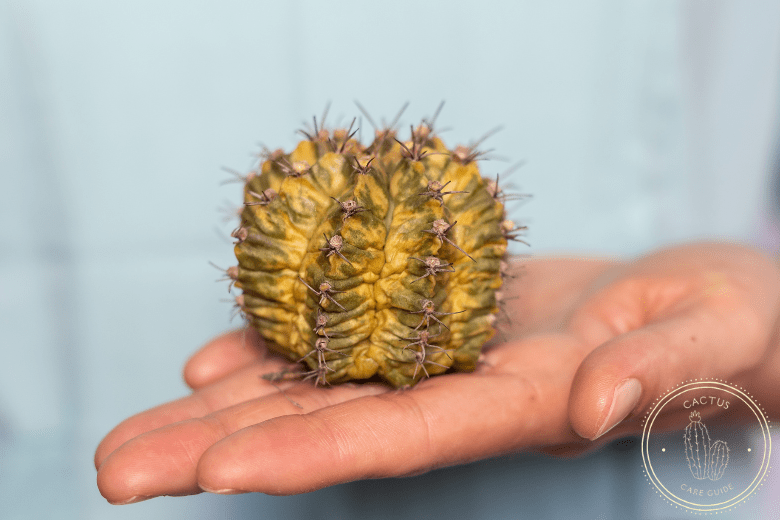
Color Change
Color changes are quite common for cactus plants, they can be influenced by their age, conditions, temperature, and sunlight exposure.
A slight browning in older plants known as corking is a natural process that you shouldn’t worry about.
When a cactus undergoes corking, the cactus turning brown from the bottom, making it easy to identify. So, if your cactus turns brown it doesn’t necessarily mean that cactus is dead.
Certain types of cacti can also turn brown or reddish due to stress, such as sudden changes in temperature or sunburn.
Under normal conditions, these plants will revert to their usual green color once the stressor is removed
However, if you observe that your entire plant has changed its color to brown or gray, or if there are black or brown spots appearing along with other indicators, it’s likely a sign that your cactus is dying or already dead.
In such cases, it’s important to assess the overall health of your cactus and take necessary actions to either revive it or prevent the spread of potential diseases to other plants.
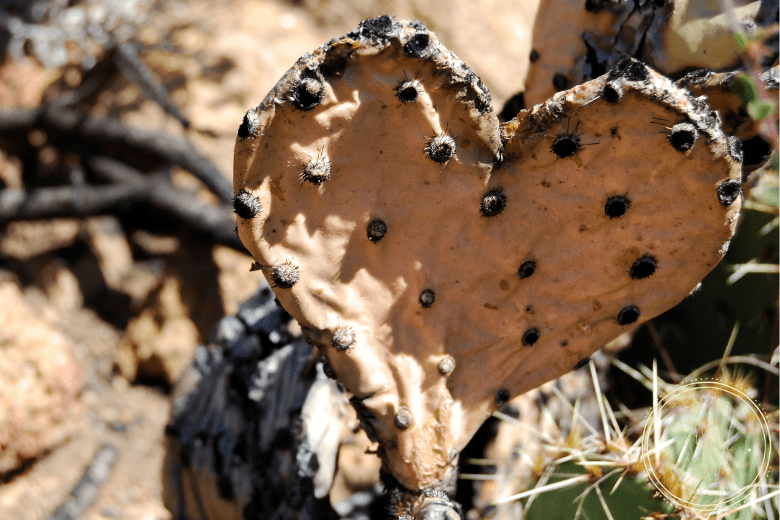
Loss of Spikes
A sudden fall of all spikes usually means that the cactus is dead.
However, don’t rush to throw your plant away, loss of spikes on cacti can also indicate its stress caused by illness or a change of environment.
Cacti usually lose their spikes as a result of root rot, which is caused by extensive watering.
If you found it before all parts of the plant started to rot, you can cut off rotting parts and change the pot.
Sometimes you’ll notice brown or black discoloration on your plant before spikes fall off.
Loss of spines can also occur a few weeks after transplanting to new soil. It’s a natural process that shows that a cactus experienced stress due to the change in environmental conditions.
Dry and shriveled plant
A shriveled appearance is another sign that your cactus is dead.
There are plenty of reasons why a cactus plant looks shriveled or dry. The first obvious reason is underwatering, the cactus will dry out with enough water. Cacti need water, even if they’re desert plants, because an arid climate makes them able to live with a small amount of water, but completely without it.
Shriveled cacti just trying to save as much water as possible. If the soil is dry, try to water it properly and observe the plant thoroughly.
If the cactus doesn’t dry out, in the next few weeks it will go back to normal conditions.
The second, paradoxically, overwatering. Extensive watering can cause root rot, which prevents the plant from absorbing water properly.
When the root is rotting, the cactus is dying, so the best you can do is to get rid of rotten parts of the cactus and transplant it into another pot.
Soft, mushy structure, and foul smell
Soft, mushy structure and foul smell are the main indicators that your cactus is dead.
The soft structure and bad smell can be signs of root rot. Rot on a cactus appears when it is overwatered or left in a humid area. There are chances to save the cactus if you notice root rot early before it affects the entire plant.
What can you do? If root rot hasn’t spread too far, you can use clean scissors to cut rotting parts off.
However, if the rot has spread throughout the cactus, it might be too late to save it. In such cases, it’s best to remove the cactus to prevent the rot from spreading to other cacti.
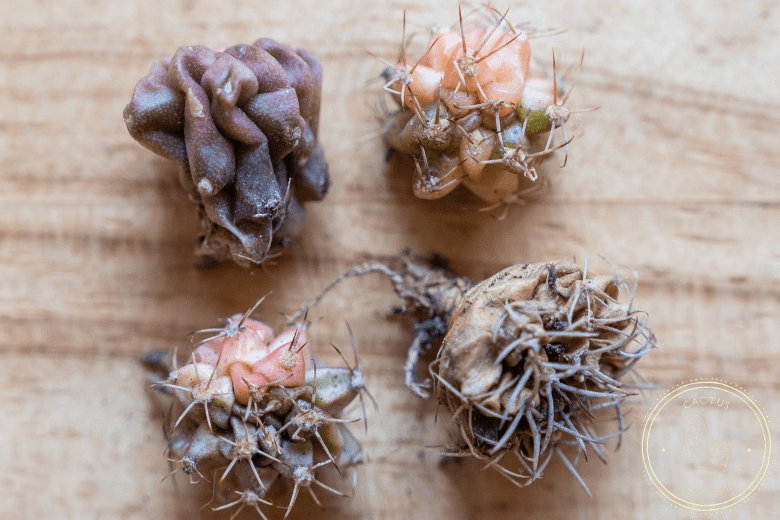
Instability in the soil
Another sign which indicates that the cactus is dead.
A healthy cactus has a strong root system that keeps it in place. Instability in soil is a sign of damaged roots, which can’t hold the plant anymore.
Another reason can be a lack of important nutrients or that a pot is too small for your cactus.
Try to set your plant in a larger pot, adjust regular watering practices, and use fertilizer. If notice signs of rot, try to cut it off and change the potting mix.
However, if there is too much rot, cactus may not be saved.
Many of these problems can be prevented with proper care and the right conditions. Don’t worry though, there is always a chance to save cacti if you notice signs early enough.
How to Save a Dying Cactus?
If you’ve observed some of the signs mentioned above on your cactus, don’t panic just yet. There’s a good chance you can still save your cactus. The resilience of cacti is truly remarkable – they can regenerate from just a small portion of healthy tissue. So, even if parts of your cactus are damaged or dying, there’s always hope. With the right care and conditions, your cactus can become healthy again.
Check and Fix the Root
The most common reason why cactus is dying is root rot. Before looking for other reasons, check out the roots. Roots problems are quite widespread, so if you notice some problems with your cacti, it’s the best first step, to begin with.
To get rid of the rot use a clean sharp knife to cut off rotten parts of the cactus. Allow the cut part to dry and then place your cactus in a a pot.
The potting soil should provide water drainage, so choose one with drainage holes. Remember that cactus roots don’t like waterlogged soil, so a container that allows excess water is essential.
Before planting your cactus you should wash a new pot to get rid of bacteria in there, by washing it with a mix of one part of bleach and one part of water.
Also buy well-drained cactus soil, which prevents water from accumulating around the roots, reducing the risk of root rot.
You can create proper potting mix yourself, by mixing two parts garden soil and two parts coarse sand. This mixture provides better drainage for cacti and decreases pathogens that can cause rotting.
Watering is Important
Originally from arid climates, cacti prefer rare but deep watering. How to tell if cactus needs water? Well, cacti are desert plants, so a little water is better than overwatering. To avoid overwatering, wait until the soil is completely dry between watering, and make a watering schedule.
Water sparingly in winter when cacti are typically in a dormant phase, which is usually in winter.
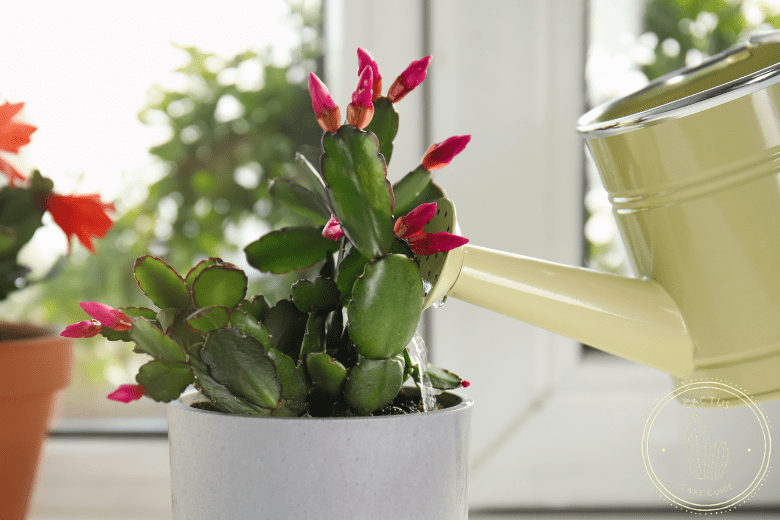
Control the Temperature
Cacti generally prefer warm temperatures. The perfect temperature for cacti is 65-90 degrees Fahrenheit, so in cold seasons try to provide your cactus with an extra source of heat.
While they can tolerate fluctuations, it’s essential to protect them from extreme cold. Avoid placing them near drafts or close to windows during chilly nights.
Make Sure Your Plant Receives Sunlight
Provide ample sunlight for your cactus. Most cacti thrive in direct sunlight, so place them in a sunny spot, where they receive at least 6 hours of bright, indirect sunlight each day. South- or west-facing windows are often perfect.
If you struggling to provide your cactus with a natural source of light, try an artificial one. There are wide range of LED bulbs, that you can use to provide cacti with light.
It’s also essential to make sure that your plant processes the light successfully. Dust and dirt can prevent cacti from receiving enough sunlight, so carefully use dish soap and a soft sponge to get rid of them.
Keep Control of Pests
Keep an eye out for pests such as spider mites or scale insects. They are a significant threat to your cactus. If you notice some tiny red spiders on your plant, firstly isolate the infected plant. Then spray your cactus with water to dislodge mites and reduce their population.
You can also try neem oil which is a natural insecticide that can be effective against spider mites. Mix neem oil with water according to the manufacturer’s instructions and spray the solution on the cactus, covering both the upper and lower surfaces of the leaves
While it’s difficult to predict whether your cactus will fully recover from a pest infestation, these steps can certainly help improve its chances. More importantly, they can prevent further damage and potential death of the cactus. Remember, proactive and early intervention is key in dealing with pests.
Conclusion
Despite being considered strong survivors, cacti still need special environmental conditions to stay healthy. Breaking these conditions will lead to certain problems.
In conclusion, caring for a cactus involves more than just watering it occasionally. It requires attentive care, attention to detail, patience, and a willingness to learn about the specific needs of your plant. With the right care, your cactus can thrive and bring beauty to your home or garden for many years to come.
Keep these tips in mind and enjoy the rewarding experience of cactus gardening. Happy gardening!
You might also like:
? How to Get Rid of Cactus Bugs
? Can You Cut off a Piece of Cactus and Plant It
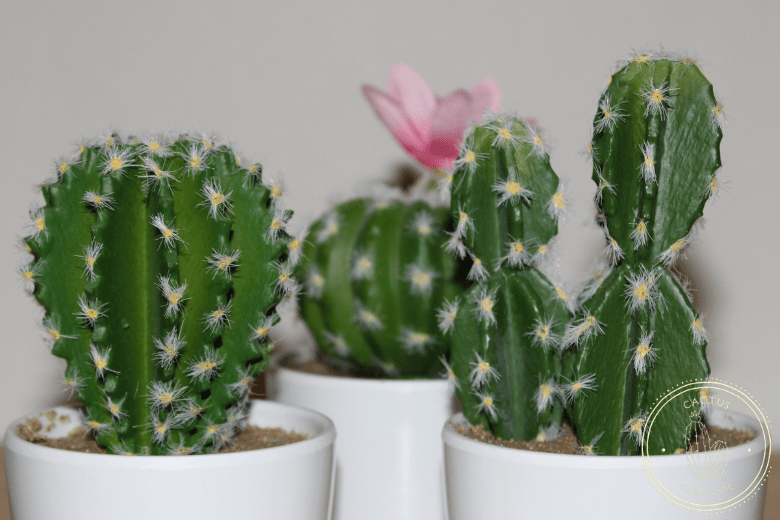
Frequently Asked Questions
Can a Dead Cactus Be Revived?
If a cactus is dead and shows no signs of life, there’s no chance of revival. But in some cases, when a cactus is dead or partly damaged, it can be saved. Get rid of dead parts and replace the cactus with fresh soil, making sure that it receives light properly.
How Do You Know if a Cactus is Rotting?
Rotting is a clear indication that a cactus is in distress and potentially might show that the cactus is dead. Signs of rotten cacti can include black discoloration, a soft texture, and instability of the plant. If you notice this, try to repot your plant in a new pot with fresh, well-drained soil and adjust the watering schedule.
Can Cactus Rot Heal Itself?
Cacti affected by rot can’t heal themselves, unlike the other plants can. However, cutting rotting parts off and placing your cactus plant in fresh soil, along with proper lighting and watering, can help the cactus plant recover.

Greetings, dear succulent lovers! I’m Jennifer West and I’m happy to share with you practical tips and guides on growing and caring for succulents, as well as all the magical facts about these unique plants. Grateful to have you on this green journey with me! Check out more about our team here.

